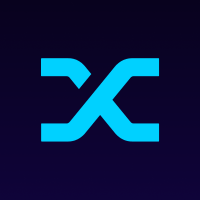Decentralized Finance (DeFi) changed the lending and borrowing industry by utilizing blockchain technology to establish a new, open financial system. Unlike traditional finance, DeFi lending platforms allow individuals to lend and borrow money without the need for banks or other intermediaries.
As the DeFi ecosystem changes, platforms are integrating advanced technologies like AI-powered risk assessments, enhanced security measures, and improved cross-chain interoperability. This enables faster transactions, reduced fees, and increased accessibility for both retail and institutional investors.
In this blog, we will explore the top 10 DeFi lending platforms in 2025, highlighting their unique features, benefits, and innovations.
What is a DeFi Lending Platform?
A DeFi Lending Platform allows users to lend or borrow cryptocurrency without going through a conventional bank. These platforms connect lenders and borrowers directly via blockchain technology, eliminating the need for banks to act as middlemen. For instance, you can deposit bitcoin into the platform and receive interest if you want to lend it.
On the other hand, if you must borrow cryptocurrency, you can do so by offering some of your own cryptocurrency as security, which entails losing some of your holdings in order to obtain the loan. Smart contracts, which are automated, self-executing contracts that guarantee safe and transparent transactions without the involvement of conventional financial institutions, are used to manage this procedure.
Features of DeFi Lending
Here are several features of defi lending, including security, liquidity, and user experience. Let’s see each one in detail:
1. Security: DeFi lending platforms are subject to the same security risks as any other blockchain-based application. However, the top platforms take steps to mitigate these risks, such as using secure coding and implementing security measures.
2. Liquidity: The top DeFi lending platforms have deep liquidity pools, which means that there is always a large supply of funds available for lending. This can make it easier for borrowers to find the terms they are looking for.
3. User experience: The top DeFi lending platforms have user-friendly interfaces that make it easy for users to interact with the platform. This can be important for users who are new to DeFi or who are not familiar with the technical aspects of blockchain technology.
Criteria for Selecting Top DeFi Lending Platforms
Choosing the right DeFi lending platforms is critical to a safe and pleasant experience. Here are some important elements to consider while assessing these platforms:
1. Security and Smart Contract Audits: Strong security measures and regular smart contract audits safeguard users’ cash from flaws and potential exploitation.
2. Interest Rates and APY: Reasonable interest rates and appealing Annual Percentage Yields (APY) give consumers with profitable chances to generate passive income or access low-cost borrowing.
3. Range of Supported Assets: A comprehensive range of supported cryptocurrencies broadens customers’ lending and borrowing possibilities, appealing to a larger audience.
4. User Interface and Experience: A straightforward and user-friendly interface improves the whole experience, ensuring it’s available to both novice and experienced people.
5. Liquidity and Volume: Platforms having high liquidity and trade volumes provide greater market depth, reduce slippage, and increase the effectiveness of lending and borrowing activities.
6. Collateralization Alternatives: Various collateral alternatives provide consumers freedom, allowing them to secure loans with a variety of cryptocurrencies.
7. Governance and Community Involvement: Active governance procedures and community engagement guarantee that users have a say in platform decision-making and future improvements.
8. Integration of Advanced Financial Instruments: Platforms that include features such as flash loans, margin trading, and defi yield farming provide users with advanced financial instruments for a variety of strategies.
How Does DeFi Lending Work?
Blockchain networks, mainly Ethereum, use a number of smart contracts to facilitate DeFi lending and borrowing. This is how the procedure usually goes
- Lending Platforms: Consumers put their bitcoin into a lending platform, which aggregates these resources to give borrowers access to liquidity.
- Interest Rates: The platform’s supply and demand dynamics are used to algorithmically compute interest rates.
- Procedure for Borrowing: To ensure security, borrowers must provide collateral for loans, which is often greater than the loan amount.
- Smart Contracts: These self-executing agreements automatically handle the loan’s conditions, such as interest payments and, if required, the liquidation of collateral.
- Yield farming : Yield farming is the practice of lenders earning interest on their deposits, which can be substantially higher than that of ordinary savings accounts.
Top 10 DeFi Lending Platforms in 2025
Decentralized finance is growing rapidly, with sales expected to jump from $26.17 billion in 2024 to $37.04 billion by 2028. Here are the top 10 DeFi lending platforms in 2025:

1. Aave
Aave is widely regarded as one of the pioneers of the DeFi lending space. Its unique feature, "Flash Loans," enables users to borrow assets without collateral as long as the borrowed funds are returned within a single transaction block. Within this crypto lending platform, you are presented with the opportunity to participate in token staking, resulting in a commendable Annual Percentage Yield (APY) that spans from 4% to 12%, albeit with the precise rate not being set in stone. Nexo's distinctive strength comes to light in its unwavering support for stablecoins, boasting an ample APY of up to 12% tailored for cryptocurrencies such as Tether, USD Coin, and DAI. In a similar vein, the APY for Bitcoin lending platform rests at 4%, mirroring the standing of Polygon – a cryptocurrency that has earned recognition from Reddit users as a prime investment contender.

2. Compound
Compound is yet another best DeFi lending platform that operates on the Ethereum blockchain. Known for its user-friendly interface and wide range of supported assets, Compound offers both lenders and borrowers a seamless experience. It stands out for its algorithmic interest rate model, which adjusts borrowing and lending rates based on market demand. This creates a dynamic and efficient market for users to earn interest on their assets or borrow with competitive rates. Furthermore, Compound's decentralized nature ensures that users retain full control over their funds without the need for intermediaries. This, combined with its integration with various wallets and dApps, solidifies Compound's position as a prominent player in the DeFi world.

3. MakerDAO
MakerDAO- a key player in DeFi lending apps, is renowned for its stablecoin DAI, which is generated through overcollateralized loans using Ethereum-based assets as collateral. Users can lock their assets into the MakerDAO system and generate DAI as a loan against their collateral. This unique mechanism ensures the stability of the DAI token, making it a prominent player in the DeFi lending arena. Moreover, MakerDAO's decentralized governance model allows MKR token holders to actively participate in decision-making, ensuring the system's adaptability and security. The protocol's ability to maintain the DAI's value peg to the US Dollar, even during market volatility, has solidified its reputation as a cornerstone of the DeFi ecosystem. Its innovative approach to decentralized lending continues to shape the future of decentralized finance.

4. Uniswap
Uniswap is a leading DeFi lending platform built on Ethereum, enabling users to lend, borrow, and earn interest on their crypto assets without intermediaries. Known for its automated market maker (AMM) model, Uniswap uses smart contracts to facilitate seamless lending and borrowing. Users can provide liquidity to lending pools and earn interest or borrow against their crypto holdings. With competitive interest rates and low transaction fees, Uniswap has become a popular choice for yield farming and DeFi lending. Its user-friendly interface and wide range of supported tokens make it a preferred platform for both retail and institutional DeFi investors.

5. Balancer
Balancer is a DeFi lending protocol that also functions as an automated portfolio manager and liquidity provider. It allows users to create and manage customizable lending pools with up to eight tokens. Balancer’s smart pools automatically rebalance assets, enabling users to maximize returns through lending fees and interest. Its flexible pool structures and efficient pricing strategies make it a popular choice for yield farming, decentralized trading, and lending, offering users diverse earning opportunities.

6. SushiSwap
SushiSwap started as a decentralized exchange and has since expanded to include loan and borrowing services via its Kashi platform. Kashi enables customers to develop and administer their lending marketplaces, giving them greater flexibility and control. SushiSwap's transition from a DEX to a versatile DeFi platform demonstrates its adaptability and ambition, making it a standout choice for DeFi fans.

7. Curve Finance
Curve Finance specializes in stablecoin lending and swapping, focusing on low slippage and high efficiency. The platform is designed to maximize stablecoin liquidity, making it ideal for users looking for stability and low risk. Curve's innovative approach to stablecoin trading, as well as its efficient liquidity pools, has earned it a large following among the DeFi community.

8. Yearn Finance
Yearn Finance provides a variety of DeFi products, including financing, yield farming, and more. It is well-known for its automated yield optimization tactics, which shift user funds between lending platforms to optimize returns. Yearn.finance's automation and optimization make it especially appealing to those looking to maximize their returns with minimal manual intervention. The platform's novel methodology and significant community support position it as a major contender in the DeFi space.

9. Synthetix
Synthetix is a prominent DeFi lending platform known for its innovative synthetic asset issuance protocol. It allows users to lend and borrow synthetic assets (Synths) that mirror the value of real-world assets, including fiat currencies, cryptocurrencies, and commodities. By leveraging collateralized debt positions (CDPs), Synthetix enables users to mint Synths against their staked SNX tokens. The platform offers liquidity incentives and staking rewards, making it attractive for both lenders and borrowers. With its decentralized exchange (Synthetix Exchange), users can trade Synths without the need for traditional order books, ensuring low slippage and efficient pricing.

10. Lido
Lido is a DeFi lending platform that offers liquid staking services for various cryptocurrencies. It allows users to stake their assets while maintaining liquidity by receiving staked tokens (stTokens), which can be used in DeFi lending protocols for additional yield. Lido’s lending ecosystem provides users with the ability to earn rewards on staked assets while simultaneously accessing liquidity for borrowing or participating in other DeFi activities. The platform supports major cryptocurrencies like Ethereum (stETH), Polygon (stMATIC), and Solana (stSOL).
DeFi Lending Trends for 2025 and Future Predictions
Though the DeFi ecosystem is evolving with time, so are its other elements. Some major trends in DeFi lending you should be aware of in 2025 are:
1. AI Integration: Future DeFi lending protocols will leverage artificial intelligence and advanced analytics to enhance risk assessments and offer personalized lending decisions. By analyzing large datasets, these protocols will provide more accurate credit evaluations and optimize interest rates, making lending and borrowing fairer and more accessible.
2. Improved Interoperability: DeFi platforms will become more interconnected, enabling seamless asset transfers across different blockchains. This increased interoperability will expand liquidity and create a more unified DeFi ecosystem.
3. Enhanced Security Measures: To combat hacks and fraud, future protocols will incorporate sophisticated encryption, rigorous smart contract audits, and real-time threat detection, ensuring stronger protection for users’ assets.
4. Regulatory Compliance: As DeFi grows, compliance-friendly solutions will emerge, integrating legal requirements into protocols while preserving their decentralized nature. This will enhance trust and promote wider adoption.
5. User-Friendly Interfaces: The user experience will significantly improve with intuitive interfaces and streamlined interactions, making DeFi lending easier to use and attracting more participants.
6. Integration with Traditional Finance: DeFi will increasingly bridge the gap with conventional finance, allowing users to interact with DeFi platforms using traditional currencies and services, further boosting its accessibility and appeal.
Conclusion
DeFi lending platforms offer unique features, catering to the diverse needs of traders, lenders, borrowers, and passive income seekers. Whether you aim to earn interest on crypto holdings, access liquidity, or engage in decentralized finance, there is a platform to help you achieve your financial goals.
When selecting a DeFi lending platform, prioritize security, liquidity, and user experience. Ensure the platform has a proven track record, transparent governance, and smart contract security.
For businesses seeking to develop a DeFi lending protocol, partnering with an experienced DeFi development company is essential. Choose a company with expertise in blockchain technology, smart contract development, and security protocols.
Get in touch with SoluLab, a leading DeFi lending development company, to discuss your project and turn your DeFi vision into reality.
FAQs
1. What sets DeFi lending platforms apart from traditional lending?
DeFi lending operates on blockchain technology, enabling trustless and transparent transactions without intermediaries.
2. How do users benefit from yield farming on DeFi lending platforms?
Yield farming allows users to earn additional tokens by providing liquidity to the platform, contributing to its growth.
3. What factors should users consider when selecting a DeFi lending platform?
Users should prioritize factors such as security, transparency, user experience, and the platform’s unique features.
4. How do decentralized governance models impact the user experience on these platforms?
Decentralized governance empowers users to participate in decision-making, fostering a sense of community and inclusivity.
5. Are these platforms suitable for users with limited technical knowledge?
Yes, many platforms prioritize user education and provide resources to help users, regardless of their technical expertise.
6. What role does smart contract technology play in DeFi lending?
Smart contracts automate lending processes, ensuring efficient and secure execution of lending agreements.
7. How do DeFi lending platforms contribute to financial inclusion?
By operating without geographical restrictions, DeFi lending platforms enable users worldwide to access financial services and opportunities.




